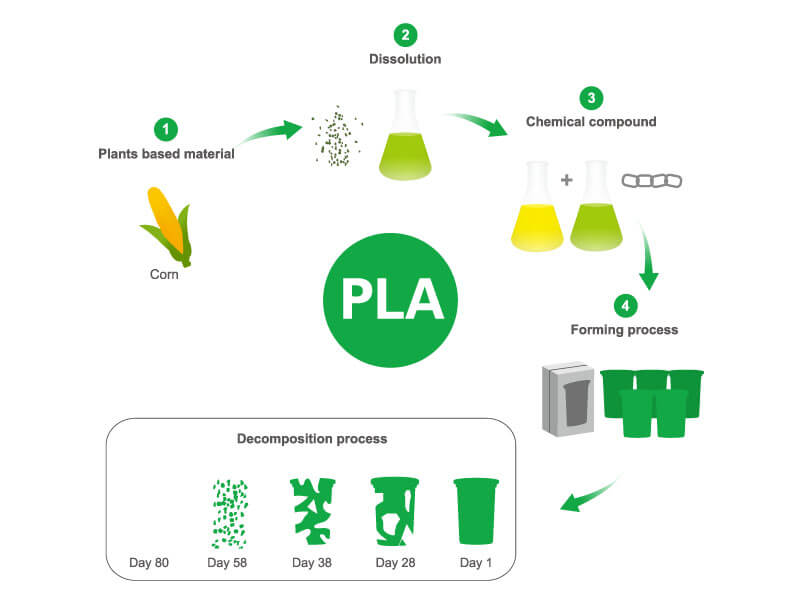How PLA Packaging Is Sustainable
PLA is a sustainable alternative to traditional plastics. It’s made from plants, has a low carbon footprint, and can biodegrade in landfills. PLA is also more cost-effective than other materials when it comes to delivering your food or beverage products.
What Is PLA and Why Is It Environmentally Friendly?
PLA is a bioplastic made of corn. Unlike traditional plastics made from petroleum and do not biodegrade, PLA is fully compostable, making it an environmentally friendly choice.
PLA can be used to make cups, plates, bowls and other food containers; and it is also used in the medical industry such as syringes and IV bags.
PLA packaging is made in the same way as traditional plastic bags and containers. It is made of corn starch that has been processed into a resin and then molded into its final shape.

PLA packaging is fully compostable and will break down in a commercial facility. If it’s not properly disposed of, it can be sent to an industrial composting facility to be broken down into carbon dioxide and water.
How Is PLA Made?
PLA is a thermoplastic polymer that can be melted and molded into any shape. This makes it a great alternative to petroleum-based plastics which are produced through a process called “fracking” and are not biodegradable. PLA is made of renewable resources such as cornstarch or sugarcane (depending on the type you select), so once your product has been used, you can compost PLA and break down into carbon dioxide, water, and humus—the organic material found in soil which helps plants grow.
PLA packaging is also recyclable in most municipalities across the country! Just look for the symbol with arrows pointing into each other on your package:
The Benefits and Cost of PLA Packaging
PLA is a sustainable and renewable resource. It is composed of starches and sugars derived from corn or sugar cane, which are grown in a healthy soil ecosystem. When PLA reaches the end of its life cycle, it can be composted to create fertilizer for agricultural soils. PLA has been shown to degrade at an accelerated rate compared to traditional plastics such as polyethylene terephthalate (PET) and polystyrene (PS).
In addition to being biodegradable, PLA is also 100% recyclable into new material, serving a significant advantage over conventional plastics that cannot be recycled at all. This makes it far more cost-effective than most other types of plastic as well as better for the environment!
What Kinds of Products Can Be Made with PLA?
Made of renewable resources, PLA is a great alternative to plastic. This means that it doesn’t require any non-renewable resources like oil and gas to produce. It can be made of crops such as sugarcane, corn and other grains.
PLA packaging is used for a wide variety of products including food, beverages, personal care items and medical supplies. The most common PLA packaging is in the form of cold cups, bottles and food containers but you will also find PLA clothing, plates and more on the market today.
PLA Coated Paper Food Packaging
PLA is a biodegradable material that can be composted at home, making it a more sustainable option than traditional plastics. It’s also important to note that unlike petroleum-based plastics, PLA is not harmful to the environment or animals when it ends up in landfills and oceans.
PLA is a great option for all your food and beverage packaging
One of the biggest benefits of PLA packaging goes to its various application. PLA packaging is made of renewable resources, so it’s a great option for all your food and beverage packaging needs. From food containers to trays to cups and lids, there are many different types of products that can be made using PLA packaging.

PLA material is a great option for all your food and beverage packaging needs. It’s made from plants, so it’s renewable and sustainable. PLA is also biodegradable, so it won’t take up space in landfills for centuries like other plastics do. In addition, there are many benefits associated with using this type of material over traditional plastic alternatives such as PET or PS. The biggest advantage? PLA doesn’t contain any BPA (bisphenol A), causing no harm to your food or drinks!
